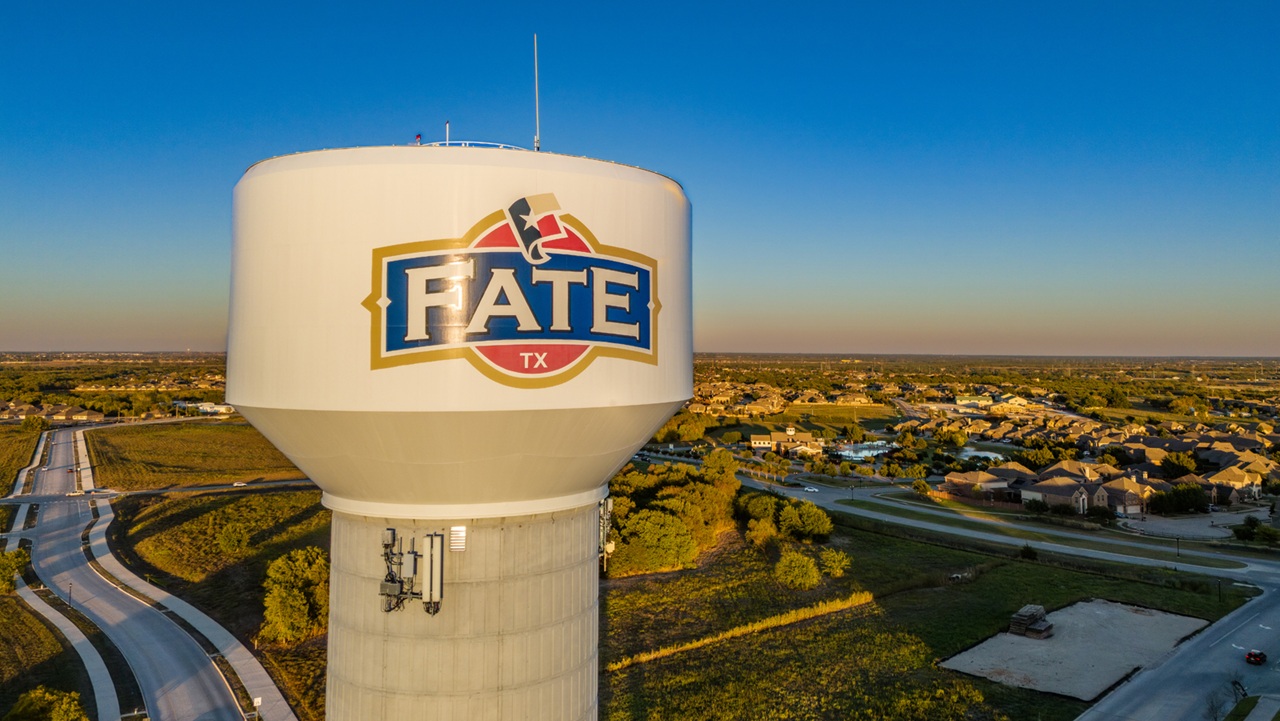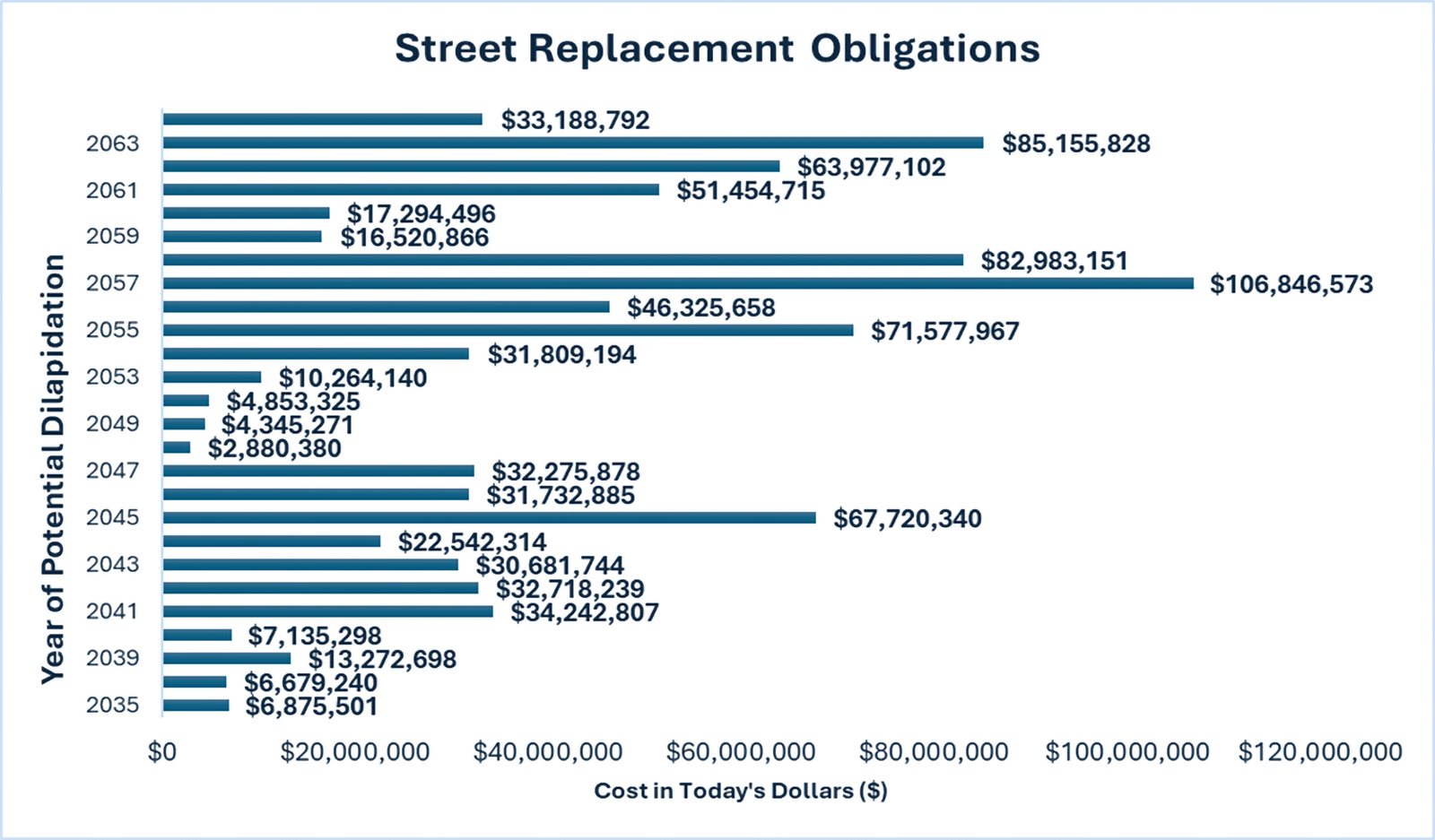
Nearly $1 billion in road infrastructure obligations is an alarming number to fathom for a small town. But that’s the estimated cost to replace all 103 road miles of streets in the city of Fate, Texas, USA, over the coming decades.
Like many communities, Fate has postponed long-term planning for road repairs as infrastructure was built out. Now, with rapid growth adding more infrastructure and older streets nearing the end of their lifecycle, it was crucial to develop a sustainable, strategic plan to address these challenges.
To get ahead of this issue, the city developed the first phase of its street replacement plan that outlines the estimated costs of replacing all its roads, highlights ongoing efforts to extend road lifespans, and identifies conceptual funding strategies to prepare for future maintenance and reconstruction. The goal is to ensure that Fate is positioned to meet these infrastructure demands without placing an unmanageable financial burden on future generations.
A unique challenge for Fate and its neighboring cities is the expansive nature of the soil. The soil’s swelling (water absorption) and shrinkage (contraction due to extreme heat) causes significant ground movement. Additionally, poor infiltration due to these soils contributes to the instability and shifting around foundations and roadways. These environmental factors create engineering challenges that are both costly and difficult to predict.
The city’s expansive soils significantly shorten pavement lifespans. This accelerates subgrade failures and edge deterioration, leading to costly repairs and full replacements sooner than expected. Given these challenges, Fate’s street replacement plan prioritizes proactive maintenance and strategic funding to extend road life and delay reconstruction wherever possible. For this analysis, we used a 40-year road life span, consistent with our asset life for roads in our annual comprehensive financial report.
What Is Considered a Failed Road?
A failed road is one that has significantly deteriorated to the point where it no longer meets safety, functionality, or aesthetic standards. Two major characteristics of a potentially failed road:
Compromised edges: Cracking, crumbling, or the loss of structural integrity at the road’s sides create safety hazards and accelerate the needs for repairs or replacement.
Subgrade failure: This is caused by shifting soil and poor drainage. Once the base has failed, anything on top will also deteriorate, leading to pavement cracks, potholes, and further structural damage.
Understanding the Cost of Road Replacement
To project future replacement costs, city staff used GIS mapping to determine road lengths and calculated reconstruction expenses based on an estimated $4.2 million per 12-foot lane mile, as recommended by the city engineer. This estimate accounts for paving, drainage, water and wastewater lines, and other essential infrastructure like sidewalks and/or adjacent roadway trails.
Applying this methodology to Fate’s 103 road miles, the total projected cost to replace all roads is $973,584,729— a staggering number that underscores the necessity of a long-term funding strategy.
Ongoing Maintenance Efforts
As new neighborhood phases throughout Fate expand to their authorized levels, the new road infrastructure grows, leading to increased road-related expenses. Roads built to support these developments will eventually require regular maintenance and, ultimately, reconstruction.
Recognizing that preventative maintenance is the most cost-effective way to extend pavement life, the city has ramped up its road maintenance program. In fiscal year (FY) 2025, the budget includes $1.9 million for road maintenance. Over the past decade, Fate has steadily increased road maintenance funding, understanding that every dollar spent on preservation saves multiple dollars in future replacement costs. Methods of road maintenance that the city has used include:
Replacing Concrete Panels: Precast or cast-in-place concrete panels are placed in roadways to repair or replace damaged sections. This method is fast, minimizing disruption to traffic, and it offers a durable, long-term solution.
Polyurethane Foam Injection: Polyurethane foam is injected beneath concrete slabs to fill voids, lift sunken sections, and stabilize the pavement. It’s a quick solution that provides almost immediate traffic return.
The city is also leveraging new pavement condition software and asset management tools to better assess which roads need attention, what level of treatment is appropriate, and how resources should be allocated as the FY 2026 budget is being considered. It is likely that continued six or seven figure annual increases in maintenance funding will be needed to maintain pavement conditions.
Challenges and Considerations
One of the biggest challenges in planning for road replacement is Fate’s development history. Many of the city’s existing streets were built with traditional suburban development patterns that do not generate enough tax revenue to support long-term infrastructure obligations. The city is actively working to align land-use decisions with fiscal sustainability, encouraging higher-density, mixed-use developments that contribute more to the tax base per acre. The city’s new development fiscal analysis tool is available here. Additionally, Fate’s expansive soils remain a major contributor to premature road failure. Up to 90% of road failures in Fate are linked to soil movement, making it critical to incorporate improved materials and design methods in future road construction.

Long-Term Planning and Next Steps
With road replacement costs expected to surge in the coming decades, Fate is taking proactive steps to address long-term funding needs. Fortunately, the city council recognizes that this is not a challenge that can be deferred to future generations and fully supports the staff’s efforts to further develop a detailed sustainable strategy that will become the second phase of the plan.
To mitigate financial impact and distribute costs over time, several key funding strategies are under consideration:
Capital Reserve Funds
Establishing dedicated savings for road replacement to reduce reliance on debt. Fate has dedicated reserves for water and sewer infrastructure replacement equal to annual depreciation costs in its utility fund budget, but nothing in its general fund budget now for streets.
Debt Issuance
Evaluating options for future bond measures to finance major replacements.
Water and Sewer Coordination
Aligning street replacement with underground utility projects to maximize capital replacement funds.
Together, these approaches form a multi-pronged strategy to responsibly manage infrastructure costs while minimizing future taxpayer burden.
While these measures do not eliminate the need for significant future investments, they provide a framework for managing costs strategically. To ensure that Fate’s road network remains viable, the city is committed to a data-driven approach, including phased funding strategies to spread financial impact over time and minimize strain on future budgets.
Conclusion
As shown in the Street Replacement Obligations graph (Figure 1), there are several periods where a significant concentration of road replacement obligations will arise. To proactively address this, the city has made considerable efforts to build up its road maintenance funding, and the public works department routinely performs maintenance that extends the lifespan of roads, delaying the need for full replacements. These efforts will intensify with the use of new asset management software to integrate pavement conditions with scenario tools to recommend asset management strategies and funding allocations to maximize pavement life.
The city of Fate is at a pivotal point in planning for its street infrastructure future. With a clear understanding of replacement costs, funding challenges, and ongoing maintenance needs, the street replacement plan provides a roadmap for sustainable infrastructure investment.
While the financial road ahead is steep, the city’s commitment to proactive planning, engineering adaptation, and strategic investment lays the groundwork for a resilient and fiscally responsible transportation system.
Adapted and expanded from an article originally published in Texas Town & City, a publication of the Texas Municipal League.
MICHAEL KOVACS is city manager of Fate, Texas, USA.
OMAR WILLIAMS is assistant to the city manager of Fate, Texas, USA.
BERLYNN WIRTZBERGER is a city manager’s office intern, Fate, Texas, USA.
New, Reduced Membership Dues
A new, reduced dues rate is available for CAOs/ACAOs, along with additional discounts for those in smaller communities, has been implemented. Learn more and be sure to join or renew today!
